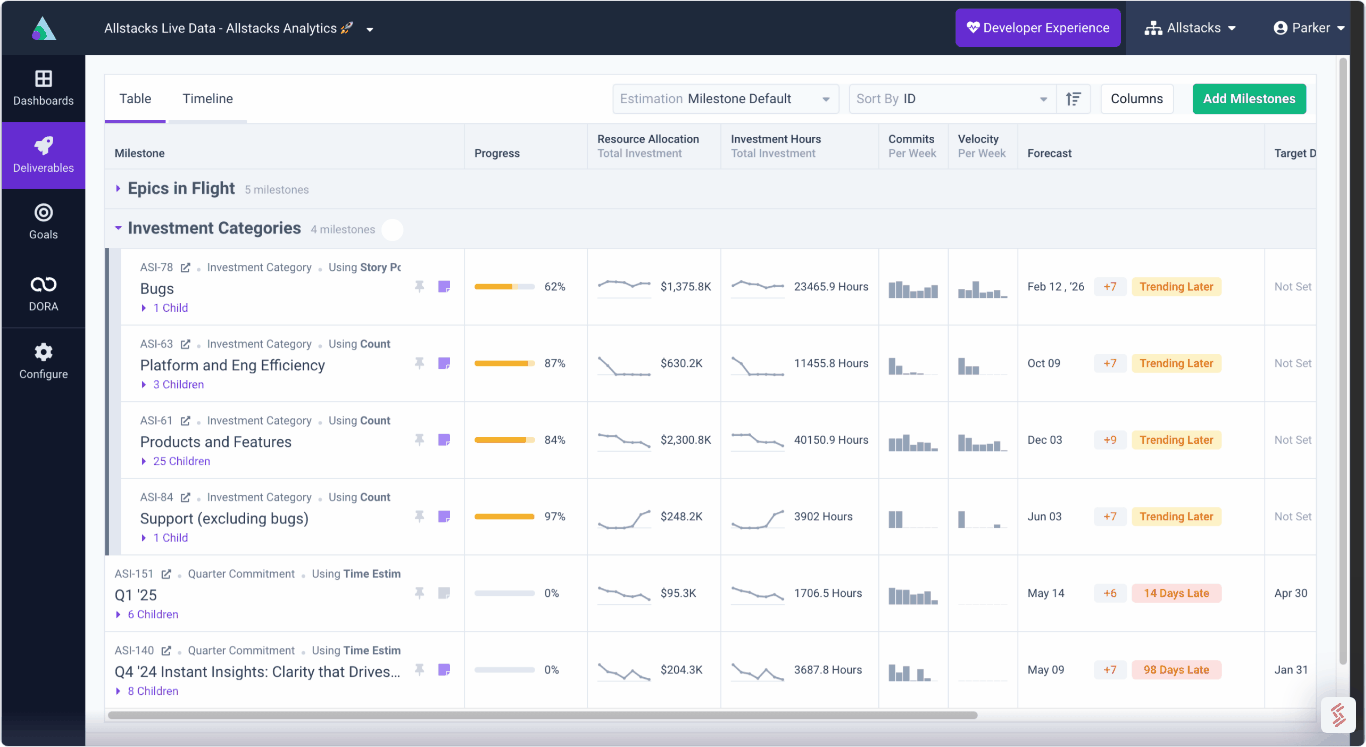.png)
Software Engineering Intelligence
-
Intelligence Engine
On-demand exhaustive AI-analysis
-
Engineering Investment
Complete visibility into time & dollars spent
-
360º Insights
Create meaningful reports and dashboards
-
Project Forecasting
Track and forecast all deliverables
DevEx
-
Developer Surveys
Create and share developer surveys
Software Capitalization
-
R&D Capitalization Reporting
Align and track development costs
Identifying when an issue fails a checkpoint using machine learning
It’s difficult to understand all of the states in a team's process so defining what makes an issue a “failure” is not very clear, and hard to identify where things are breaking.

Quite frankly, there’s too much data and too many configurations to create a pleasant user experience, and our users need to get insights and information to drive decision making, NOT spend hours getting things configured. As part of this journey, we found many places where there was a lot of ambiguity and variability in how developer tools, our sources of data, were being used.
Quite frankly, there’s too much data and too many configurations to create a pleasant user experience
The ever-evolving engineering workflow
In most organizations, workflows are frequently changing and evolving. For example, if you use Jira, each of your teams and their respective boards can have a completely different set of states [or statuses] that are used as stories and issues pass through their process. If you compound that with the ability to move issues from one board [or project] to another, it can become nearly impossible, especially across teams, to know what’s actually going on.
However, one of the critical pieces of information to track in your process is when an issue fails a checkpoint. When it’s difficult to even understand all of the states that go into your process, defining what makes an issue a “failure” is not very clear.
It can become nearly impossible, especially across teams, to know what’s actually going on.
Using machine learning to identify issue failures
At Allstacks, we use an unsupervised learning model to observe your historical data and identify when an issue moves backward in your typical process. By inspecting all of the activity that happens in the collection of projects you have connected to Allstacks, we can apply a statistical learning model to identify what the most likely path [or paths] in your organization are.
Using that data, we’re able to categorize each interaction as either a normal workflow transition or an aberration. The algorithm thus learns from the work your team is actually doing and continues updating itself by monitoring and weighting more recent actions to keep evolving as your team’s behavior does.
This approach lets us take even the most complex workflows and identify any and all aberrations to help you surface roadblocks and trends that enable you to help your teams perform better.
If you want to see how Allstacks can help you, click here to get started with Allstacks.

